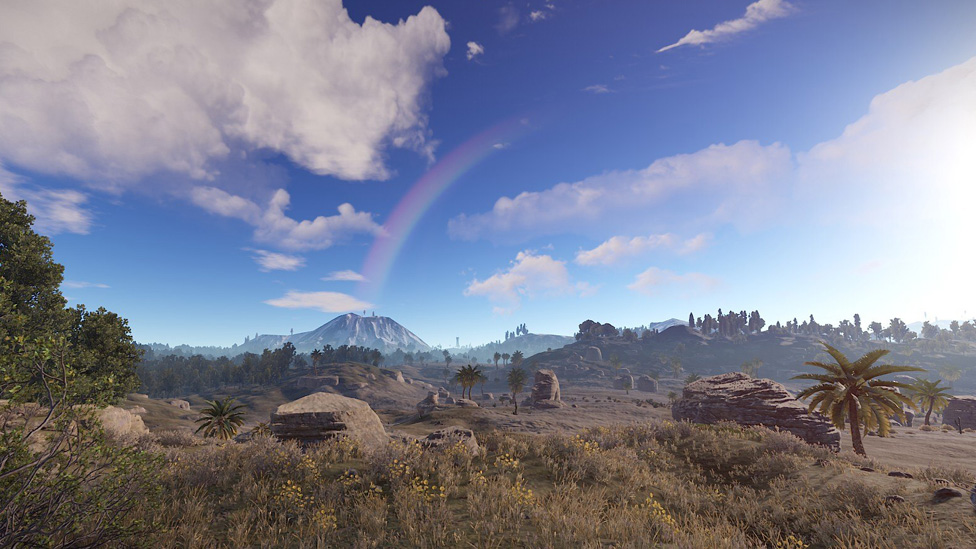How to Increase Rust Server Performance
How to Increase Rust Server Performance: Boost Your Gameplay Experience

Make Your Own Rust Server
Boosting your in-game experience starts with improving your Frames Per Second (FPS). Increased Rust FPS can significantly enhance gameplay, making actions smoother and more responsive. The right Rust FPS commands can help you tweak performance settings to optimize how the game runs on your system.
How To Make Rust Run Better with FPS Commands?
To make Rust run better, use FPS commands such as "graphics.itemskins 0" to turn off item skins, or "gc.buffer 2048" to manage memory usage better. These commands can help to streamline the game's graphics and performance, thus increasing your FPS.Enhancing Rust Performance on Your Server
Rust performance hinges on both client-side tweaks and server-side adjustments. To improve server performance, it’s important to ensure your server is properly configured and optimized for Rust.Tips to Increase Server Performance
- Upgrade to a Rust dedicated server for better control and resources.
- Regularly update your server to the latest version.
- Adjust server tick rate based on the number of active players.
How to Get Better at Rust by Tweaking Server Settings
Improving server performance isn't just about hardware; it's also about the right settings. Knowing how to get better at Rust involves fine-tuning these settings to balance the game’s demand on your system with the quality of your gameplay.Server Settings That Help Rust Run Better
- Decrease the number of assets loaded in to reduce lag.
- Limit the number of players to avoid server overload.
- Increase save intervals to lessen the server’s workload.

What to Do When the Rust Console is Down
When the Rust console goes down, it can be a sign of performance issues.Quick Fixes for Rust Console Issues
- Check the server logs for errors.
- Restart the server to clear temporary glitches.
- Verify server files to ensure all necessary components are intact.
Tips and tricks to enhance your Rust server
For your Rust server, to keep it performing as it should, we have had a thought about some tips and tricks to keep your Rust server performing on top form.Use Performance Monitoring Tools
Regularly monitor your server's performance to identify bottlenecks and issues as they arise. Utilize performance monitoring tools that can provide real-time analytics on CPU usage, memory usage, and network performance. By analyzing this data, you can pinpoint inefficiencies and address them before they become larger problems that affect player experience.Regular Server Maintenance
Establish and follow a regular maintenance schedule for your Rust server. This includes regularly updating the server software, cleaning out old logs, backing up server data, and checking for any unnecessary files or mods that could be impacting performance. This preventive maintenance ensures your server continues to run smoothly and can help reduce the likelihood of crashes and other performance issues.Manage Resources Wisely
Resource management is crucial for maintaining server performance. Allocate sufficient resources to your server based on its needs, but be wary not to over-commit hardware resources, as it may lead to your server competing with other processes, ultimately affecting its performance. Use a dedicated server, if possible, as shared hosting environments can result in unpredictable performance due to the activities of other users.Player Count Management
Too many players on your server can lead to performance issues, such as lag and long loading times. Establish a player count limit based on your server's capabilities. If you notice performance drops during peak times, consider implementing a queuing system or increasing resources during those periods to maintain a smooth gaming experience.
Utilize Server Management Mods
There are several mods available that can help to improve server performance by automating certain tasks or by enhancing server management features. Mods like RustAdmin or Rust Server Manager offer tools to optimize server operation and can reduce the overall workload for maintaining the server, thereby improving performance.Seek Professional Assistance
If you have attempted various optimizations and still face performance issues, it may be time to consult with a professional. Hosting companies or individuals specializing in Rust servers can provide expert advice tailored to your specific setup and needs. They can offer solutions that you may not have considered and help you get the most out of your server.To increase Rust FPS and overall game performance, players should employ Rust FPS commands, optimize both client and server settings, and invest in a solid Rust dedicated server. Address console issues as they arise to maintain server stability. With these strategies, you'll know how to get better at Rust and enjoy a smoother, more responsive gameplay experience.
FAQs
How do I use Rust FPS commands to increase FPS?
Rust FPS commands can be entered into the console to change settings that affect graphics and memory use, directly impacting FPS.
What are the best server settings to improve Rust performance?
Optimal server settings include reduced assets, a limited max player count, and longer save intervals.
How can I make Rust run smoother on my dedicated server?
To make Rust run smoother, upgrade hardware where possible, optimize server settings, and decrease unnecessary server workload.
What should I do if my Rust server’s performance suddenly drops?
Check for recent updates or changes, consider revising server configurations, and investigate any software or hardware anomalies.
Make Your Own Rust Server
Copyright 2019-2025 © ScalaCube - All Rights Reserved.